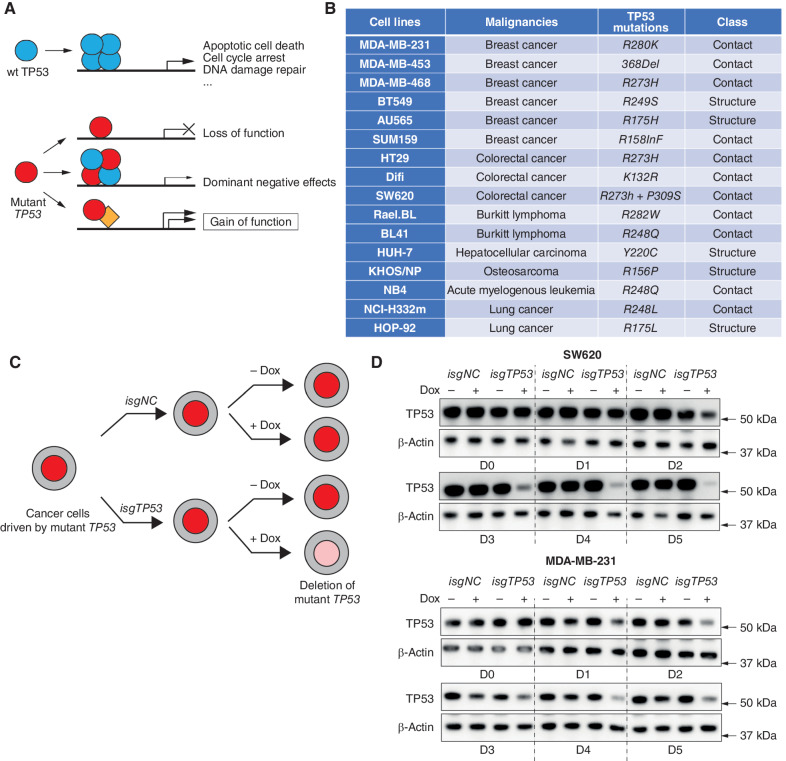Figure 1.
Removal of mutant TP53 in human cancer cell lines using doxycycline-inducible CRISPR/Cas9 technology. A, Schematic of how wt TP53 functions as a tumor suppressor and mechanisms by which mutant TP53/TRP53 proteins are postulated to promote neoplastic transformation. B, Table listing the names and cellular origin of the 16 mutant TP53–expressing human cancer–derived cell lines examined, with their respective TP53 mutations indicated. C, Schematic to illustrate the strategy for removing mutant TP53 proteins using an inducible CRISPR/Cas9 platform. D, Western blotting to demonstrate the progressive removal of mutant TP53 protein in the human cancer cell lines SW620 and MDA-MB-231 after transduction with the vector containing the doxycycline-inducible sgRNAs targeting TP53 (isgTP53) and treatment with doxycycline. One control included was to not treat these cells with doxycycline. The same cancer cell lines transduced with a doxycycline-inducible nontargeting control sgRNA (isgNC) and treated, or not treated, with doxycycline were used as further controls. Probing for β-actin was used as a protein loading control. The Western blots shown are representative of 2 or 3 independent blots from independent experiments. Removal of the respective mutant TP53 proteins from the other human cancer–derived cell lines used in this study is documented in Supplementary Fig. S1.

